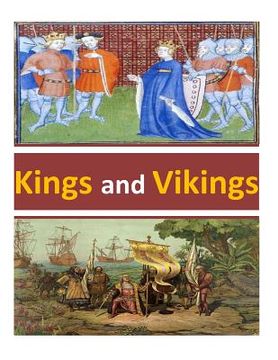Reseña del libro "Kings and Vikings (en Inglés)"
Since the early 1990s an important literature on the causes and intensity of conflict has emerged. Initiated by seminal work of Hirshleifer (1991, 1995) and Grossman (1991), several analysts have considered how rational agents allocate their endowments across productive and appropriative activities to maximize their payoffs. Since conflict, in various forms, has played a major role throughout human history - shaping the development trajectory of civilization - improving our understanding of the nature of conflict appears extremely useful.A slightly awkward feature of the conflict literature is its focus on staticmodeling. While, arguably, there are examples where opponents contest a prize during one instant and return to their usual business, there are many other cases where the nature of conflict evolves over time. Conflicts may evolve because technologies and relative prices change due to some endogenous or exogenous process, or because the incentives to behave in a certain fashion are subject to change. In this book we adopt the latter perspective, and discuss the incentives for agents to agglomerate into larger groups. Agglomeration may enable parties to better defend themselves from aggressors, or to better exploit their weaker neighbors. The result is what can be called a theory of competitive agglomeration.Our approach was motivated by the insight that dealing with issues of provisionof defense and exploitation of neighbors was one of the primary reasons for governments and larger political groups to form in the first place. In this way, our theory contributes to the literature on the optimal size of political jurisdictions, providing an alternative angle to explain the development of nation states. Like these theories, scale economies are at the heart of our story, and optimal nation size is determined by balancing benefits and costs of increasing the jurisdiction. Unlike other theories, however, our dynamic theory of agglomeration springs directly from the nature of the conflict technology, and not from an assumption about fixed costs in the provision of certain public goods. In fact, we show that the degree of agglomeration - a measure of the optimal size of a jurisdiction - depends upon the technology by which defenders and invaders interact. In essence we aim to provide a natural link between two strands of literature - analytical work on the size of nations and on arms racesWhile we hope our theory is useful in understanding the basic forces drivingagglomeration in the face of conflict in a general setting, we shall discuss our theory in terms of a particularly dramatic episode in history: the era of the Viking invasions. The Viking invasions are an interesting and in many ways ideal episode within which to study agglomeration: only through effectively forming larger groups could European settlements deal with Viking raids, while at the same time Viking invasions evolved over time from small, disorganized attacks into large, organized invasions. Our theory also allows us to consider various hypotheses as to how the invasions got started in the first place. In this paper we focus on these early days and on the development towards the high of the Viking invasions. While we don't analyze explicitly the end of the Viking era, the model can be used to shed some light on this matter as well.The book is organized as follows. In section II we provide a short history of theVikings, fleshing out some of the more pertinent stylized facts and honing in on some of the gruesome details. Section III introduces notation and sketches the bare bones of the basic model. In section IV we consider the relatively easy case where villages can 'agglomerate' in coalitions to improve their oomph in contests, but where the level of their contribution to the coalition is fixed. In section V we allow villages to optimally choose their contribution. This allows u to trace out the full dynamic system, and analyze its properties.

